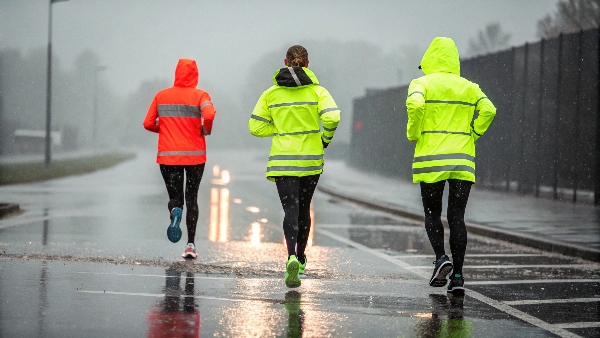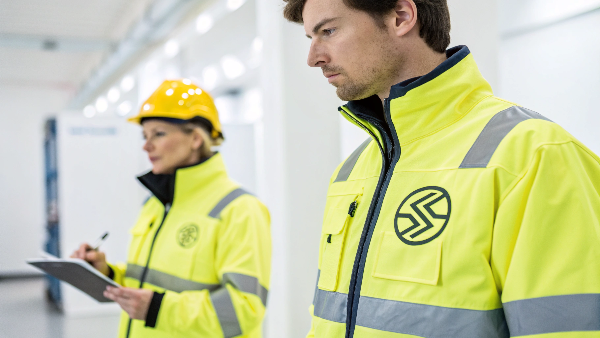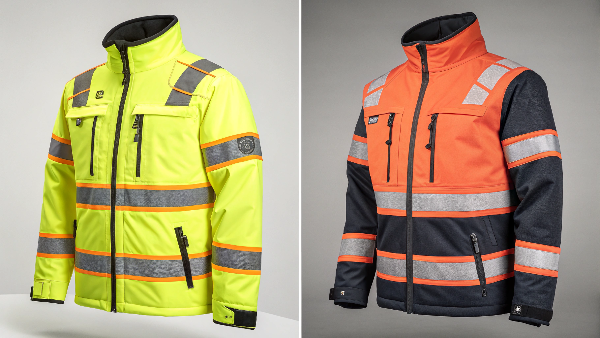Unsure if your safety vest truly offers protection? This doubt can compromise safety. Learn how quality hi-vis vests ensure you are seen and secure.
Yes, a compliant hi-vis safety vest protects you effectively by making you highly visible in diverse conditions. This significantly reduces accident risks, especially in low light or busy environments, by ensuring others can see you clearly.

Choosing the right safety vest is a critical decision for anyone working in environments where visibility is key. It's not just about wearing a bright color. It's about understanding the standards, the technology, and the specific needs of your work environment. We believe that true safety comes from informed choices and high-quality gear. Let's explore what makes a safety vest truly protective and how you can ensure you have the right one. We want you to feel confident and secure every time you put on your vest.
What is the OSHA rule for safety vests?
Wondering about OSHA's stance on safety vests? Not knowing can lead to non-compliance. Understand OSHA's requirements to ensure workplace safety and avoid penalties.
OSHA requires high-visibility clothing1 in specific situations where workers are exposed to vehicular traffic or moving equipment. This often references the ANSI/ISEA 1072 standard for guidance on vest types and classes.
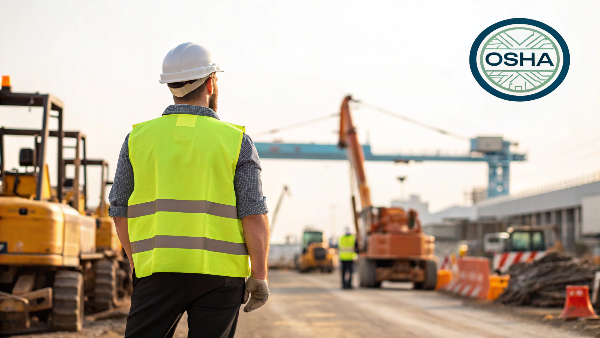
OSHA's rules for safety vests are primarily rooted in its general duty clause, Section 5(a)(1), which requires employers to provide a workplace free from recognized hazards. For high-visibility apparel, OSHA often refers to specific consensus standards, most notably ANSI/ISEA 107, "American National Standard for High-Visibility Safety Apparel and Accessories." While OSHA doesn't mandate ANSI/ISEA 107 compliance in all situations directly through a specific, overarching regulation for all industries, it's widely recognized as best practice and is explicitly required in certain contexts, such as for flaggers in road construction zones (29 CFR 1926.201(a)).
Key OSHA Considerations for Hi-Vis Vests:
- Hazard Assessment: Employers must assess the workplace to determine if hazards are present, or are likely to be present, which necessitate the use of PPE, including hi-vis vests. This involves evaluating struck-by hazards from vehicles, moving equipment, and low visibility conditions.
- Selection Based on Standards: When hi-vis apparel is deemed necessary, selecting garments that meet recognized standards like ANSI/ISEA 107 helps ensure effectiveness. This standard classifies garments based on the amount of visible background material and retroreflective material.
- Training and Use: Employers must train employees on why the PPE is necessary, how to properly don, doff, adjust, and wear it, its limitations, and its proper care, maintenance, useful life, and disposal.
As a manufacturer, we at Vissafety ensure our products, like those supplied to clients such as Danny Cheng for his North American operations, meet or exceed these crucial standards, helping businesses maintain compliance and protect their workers.
| OSHA Context | Typical ANSI/ISEA 107 Class Implied | Vissafety Compliance Focus |
|---|---|---|
| Roadway construction flaggers | Class 2 or 3 | EN ISO 20471, ANSI/ISEA 107 |
| Workers near highway traffic (day/night) | Class 2 or 3 | High-grade retroreflective tapes, durable fabrics |
| Low-speed environments, away from traffic | Class 1 or 2 | Customizable options for specific needs |
| Emergency responders | Class 2, 3, or Public Safety Vests | Specialized designs, meeting specific standards |
Do safety vests work?
Doubting the effectiveness of safety vests? This skepticism can lead to unsafe practices. Discover how these garments significantly enhance worker visibility and prevent accidents.
Yes, safety vests3 work by using fluorescent materials4 for daytime visibility and retroreflective tapes for nighttime. This contrast makes wearers stand out against complex backgrounds, preventing accidents.
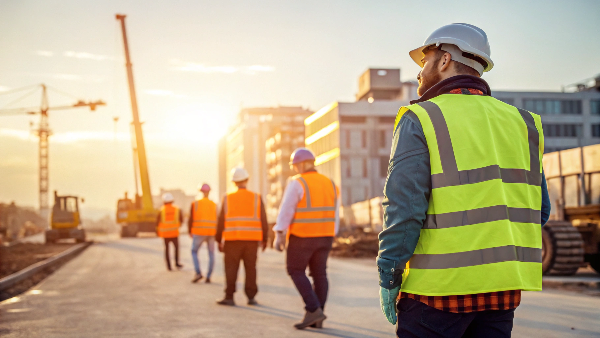
The science behind safety vests is quite straightforward but incredibly effective. They enhance a worker's visibility through two main mechanisms: conspicuity by day and conspicuity by night. During daylight hours, the fluorescent colors of the vest fabric (like yellow-green, orange-red, or red) react with the sun's ultraviolet rays. This makes the material appear to glow, increasing its visibility, especially during dawn and dusk when light levels are low. These colors provide strong contrast against most natural and urban backgrounds.
How Vests Enhance Visibility:
- Daytime Conspicuity: The bright, fluorescent background material is designed to be highly visible against ambient backgrounds in daylight. Our Vissafety vests use premium fluorescent fabrics that retain their color and brightness even after multiple washes, ensuring long-lasting visibility.
- Nighttime Conspicuity: This is achieved through retroreflective materials. These tapes or bands contain tiny glass beads or microprisms that reflect light directly back towards its source, like vehicle headlights. This makes the wearer appear very bright to drivers or equipment operators in low-light or nighttime conditions. We utilize high-quality reflective tapes that meet global standards like EN ISO 20471 and ANSI/ISEA 107.
- Contrast: The combination of fluorescent background and retroreflective tape creates a strong visual contrast, making the human form more recognizable.
Numerous studies and real-world data confirm that wearing high-visibility clothing significantly reduces the risk of struck-by accidents in various industries, from construction to logistics. Our clients, including experienced importers like Danny Cheng, rely on our vests because they know effective visibility is non-negotiable for worker safety.
| Feature | How it Works | Benefit |
|---|---|---|
| Fluorescent Fabric | Absorbs UV light, emits it as visible light, appears to "glow." | Enhanced daytime and twilight visibility. |
| Retroreflective Tape | Reflects light directly back to the source (e.g., headlights). | Superior nighttime visibility. |
| Color Choice | Standardized bright colors (yellow-green, orange-red) for maximum contrast. | Quick recognition against varied backgrounds. |
| Garment Design | Strategic placement of materials to outline the human form. | Better distance judgment by observers. |
Are safety vests considered PPE?
Unclear if safety vests are Personal Protective Equipment (PPE)5? Misunderstanding this can affect safety protocols. Learn why safety vests are a crucial category of PPE.
Yes, safety vests are definitely considered Personal Protective Equipment (PPE). They are designed to protect the wearer from the hazard of not being seen, reducing accident risks.
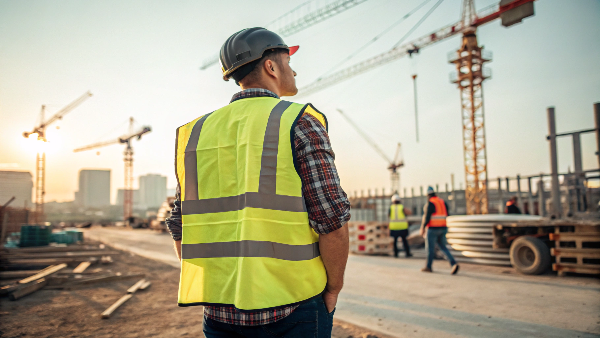
Personal Protective Equipment, or PPE, is equipment worn to minimize exposure to hazards that cause serious workplace injuries and illnesses. These injuries and illnesses may result from contact with chemical, radiological, physical, electrical, mechanical, or other workplace hazards. Safety vests fall squarely into this definition because they are designed to protect individuals from a specific hazard: the risk of not being seen by vehicle operators or machinery operators, which can lead to "struck-by" incidents. This is a leading cause of fatalities and serious injuries in many industries, including construction, road work, and logistics.
Why Safety Vests are Essential PPE:
- Hazard Mitigation: The primary hazard safety vests address is low visibility. By making the wearer more conspicuous, they directly reduce the likelihood of accidents.
- Employer Responsibility: Under regulations like OSHA's6, employers are responsible for providing appropriate PPE, like safety vests7, when hazards warrant their use. This includes ensuring the PPE is of a safe design and construction.
- Last Line of Defense: While engineering and administrative controls are the first lines of defense, PPE like safety vests provide crucial individual protection when these other controls cannot fully eliminate the risk.
At Vissafety, we take our role as a PPE manufacturer very seriously. Our vests are engineered to meet stringent international standards, ensuring they provide reliable protection. We understand that for our clients, like those in construction and logistics supplied by Danny Cheng, the integrity of PPE is paramount for their workers' safety and their operational success. The quality of the materials, the amount of reflective tape, and the overall design are all critical factors we control through our rigorous R&D and triple inspection process.
| PPE Characteristic | Application to Safety Vests | Vissafety's Commitment |
|---|---|---|
| Protects against a hazard | Protects against the hazard of low visibility and potential "struck-by" incidents. | Designing for maximum conspicuity. |
| Worn by the individual | Designed to be worn by workers in hazardous environments. | Ergonomic designs for comfort and wearability. |
| Last line of defense | Used when engineering/administrative controls aren't enough to eliminate visibility risks. | High-quality materials for reliable performance. |
| Subject to standards | Governed by standards like ANSI/ISEA 107 and EN ISO 20471. | Strict adherence and certification to global standards. |
What does a high vis vest protect?
Confused about what a hi-vis vest actually guards against? Misconceptions can undermine its value. Understand that it primarily protects the wearer by ensuring they are seen.
A high-visibility vest protects the wearer from being hit by vehicles or moving equipment by making them significantly more visible to operators, especially in low light or complex environments.
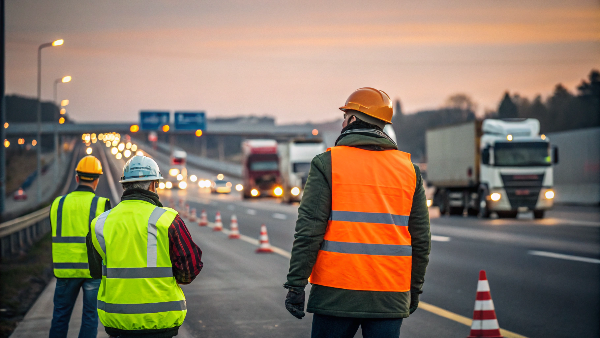
A high-visibility vest doesn't offer physical protection against impact in the way a hard hat protects against falling objects or safety boots protect against foot injuries. Instead, its protective function is preventative: it protects the wearer by ensuring they are seen by others. The primary goal is to make the individual stand out from their surrounding environment, thereby alerting vehicle operators, equipment operators, and other personnel to their presence. This increased conspicuity significantly reduces the risk of "struck-by" accidents, which are a major cause of workplace fatalities and injuries.
How Hi-Vis Vests Offer Protection:
- Enhanced Conspicuity: The bright fluorescent colors and retroreflective tapes make the wearer easily detectable from a distance, during the day, at night, and in poor weather conditions like rain or fog.
- Increased Reaction Time for Others: By making a worker more visible sooner, drivers and equipment operators have more time to react, slow down, or maneuver to avoid a collision.
- Definition of Human Form: Well-designed vests, especially those meeting standards like ANSI/ISEA 107 Class 2 or 3, use sufficient material to help define the human shape, making it easier for an observer to recognize a person.
At Vissafety, we design our vests with this core protective function in mind. Our R&D lab, equipped with over 75 testing devices, ensures that the materials we use provide optimal visibility according to global standards. This commitment means that when workers wear our vests, they are better protected from the severe hazard of not being seen in busy or dangerous work zones. This is why clients who prioritize safety, like Danny Cheng for his North American market, choose Vissafety.
| Hazard Type | How Hi-Vis Vest Protects | Resulting Safety Benefit |
|---|---|---|
| Moving Vehicles | Makes wearer visible to drivers from further distances. | Reduced risk of being struck by cars, trucks, etc. |
| Heavy Equipment | Increases visibility to operators in complex work sites. | Lower chance of accidents with machinery. |
| Low Light Conditions | Retroreflective tapes shine brightly when hit by light. | Enhanced safety during night, dawn, or dusk. |
| Inclement Weather | Bright colors cut through rain, fog, or snow. | Maintained visibility despite poor conditions. |
| Complex Backgrounds | Fluorescent colors contrast against busy visual environments. | Prevents wearer from blending into surroundings. |
What are the rules for Hi-Vis?
Uncertain about the specific rules governing hi-vis clothing? This lack of knowledge can lead to inadequate protection. Learn about key standards like ANSI/ISEA 107.
The main rules for hi-vis clothing are detailed in standards like ANSI/ISEA 107 (US) and EN ISO 20471 (Europe). These specify material amounts, colors, and design for different performance classes.
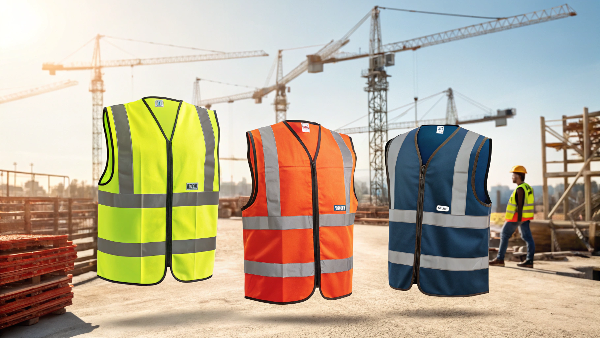
The "rules" for high-visibility clothing are primarily defined by industry consensus standards rather than specific, overarching laws in many regions, though some regulations do mandate compliance with these standards for certain job roles. The most prominent standard in the United States is ANSI/ISEA 107, "American National Standard for High-Visibility Safety Apparel and Accessories." In Europe, the equivalent is EN ISO 20471. These standards are crucial because they provide a framework for designing and manufacturing hi-vis garments that effectively enhance worker visibility.
Key Elements of Hi-Vis Standards:
- Performance Classes: Garments are categorized into different classes (e.g., Class 1, Class 2, Class 3 under ANSI/ISEA 107) based on the minimum area of high-visibility background material and retroreflective material they contain. Higher classes offer greater visibility for higher-risk environments.
- Class 1: For workers in areas with low traffic speeds (under 25 mph) and ample separation from traffic.
- Class 2: For workers needing greater visibility in poor weather or near roadways with speeds exceeding 25 mph.
- Class E (Pants/Shorts): When worn with a Class 2 or Class 3 top, the overall ensemble meets Class 3 requirements.
- Class 3: For workers exposed to high-speed traffic, complex sightlines, or who must be conspicuous through a full range of body motions at a minimum of 1,280 feet.
- Material Requirements: Standards specify the chromaticity (color) and luminance (brightness) for fluorescent background materials (typically fluorescent yellow-green, fluorescent orange-red, or fluorescent red) and the performance levels for retroreflective materials.
- Design Requirements: Placement of materials is also critical. Reflective stripes must often encircle the torso and be placed strategically on sleeves and pant legs to outline the human form.
At Vissafety, we ensure our hi-vis apparel, including our customizable options, adheres to these stringent global standards. Our R&D and quality assurance processes, including triple inspections, guarantee that our products meet the specified requirements for material, design, and performance, giving our clients like Danny Cheng peace of mind.
| ANSI/ISEA 107 Class | Minimum Background Material (sq. inches) | Minimum Retroreflective Material (sq. inches) | Typical Use Environment |
|---|---|---|---|
| Class 1 | 217 | 155 (can be combined background/retroreflective) | Off-road, parking lots, warehouse workers |
| Class 2 | 775 (fluorescent yellow-green or orange-red) / 540 (fluorescent red) | 201 | Roadway construction, utility workers, survey crews |
| Class 3 | 1240 (fluorescent yellow-green or orange-red) / 1000 (fluorescent red) | 310 | High-speed roadways, emergency responders, flagging crews |
What are the OSHA requirements for PPE?
Need to know OSHA's general PPE requirements? Not understanding these can lead to safety gaps. OSHA mandates employers assess hazards and provide appropriate PPE.
OSHA requires employers to perform a hazard assessment, select and provide appropriate PPE at no cost to employees, train them on its use, and ensure it's maintained properly.
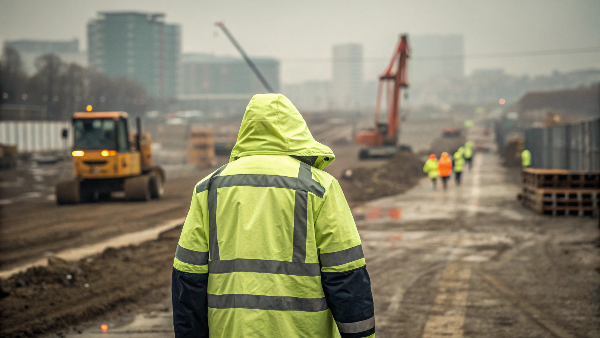
The Occupational Safety and Health Administration (OSHA) has comprehensive requirements for Personal Protective Equipment (PPE) to ensure worker safety. These are generally found in 29 CFR 1910.132 (General Industry) and 29 CFR 1926.95 (Construction). While these don't list every specific type of PPE for every job, they establish a framework for employers to follow. This framework certainly applies to high-visibility safety vests when a hazard assessment indicates they are necessary.
Core OSHA PPE Program Requirements:
- Hazard Assessment and Equipment Selection: Employers must assess the workplace to determine if hazards are present, or are likely to be present, which necessitate the use of PPE. Based on this assessment, the employer must select types of PPE that will protect affected employees from the identified hazards. For hi-vis vests, this involves identifying risks from moving vehicles or equipment and low visibility conditions.
- Provision of PPE: Employers are required to provide necessary PPE to employees at no cost. This includes hi-vis vests when needed.
- Training: Employees required to use PPE must be trained to know at least the following: when PPE is necessary; what PPE is necessary; how to properly don, doff, adjust, and wear PPE; the limitations of the PPE; and the proper care, maintenance, useful life, and disposal of the PPE.
- Maintenance and Condition: PPE must be properly maintained, kept in a sanitary condition, and be reliable. Defective or damaged PPE shall not be used.
As a manufacturer, Vissafety supports employers in meeting these requirements by providing high-quality, compliant hi-vis vests. Our products are designed for durability and effectiveness, and we offer customizable options to meet specific job site needs, ensuring that the PPE provided is appropriate for the identified hazards, a key concern for our clients like Danny Cheng.
| OSHA PPE Requirement | Description | Vissafety's Role/Contribution |
|---|---|---|
| Hazard Assessment | Employer identifies workplace hazards requiring PPE. | We provide data on vest performance in various conditions. |
| PPE Selection | Employer chooses PPE suitable for identified hazards. | We offer diverse ANSI/ISEA 107 compliant vest classes. |
| PPE Provision | Employer provides PPE at no cost to employees. | We supply bulk orders for businesses efficiently. |
| Training | Employer trains employees on proper PPE use, care, and limitations. | We provide product specifications and compliance info. |
| Maintenance & Inspection | PPE must be kept in good, reliable condition. | Our vests are made with durable, quality materials. |
Is it illegal to wear a high vis jacket?
Worried about legal restrictions on wearing hi-vis jackets? This concern is generally unfounded for civilians. Focus on when it's required rather than restricted.
No, it is generally not illegal for a civilian to wear a high-visibility jacket8 for personal safety9. Legality issues arise more from not wearing one when required by workplace regulations.
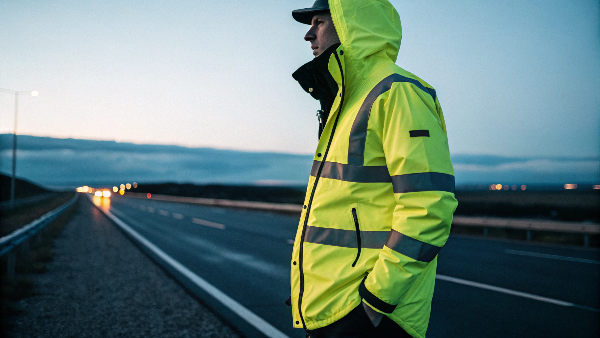
For the general public, there are typically no laws prohibiting the wearing of a high-visibility jacket or vest. In fact, many safety-conscious individuals choose to wear them for activities like cycling, jogging, or walking at night to enhance their personal safety. The primary legal considerations surrounding hi-vis clothing usually revolve around when it is mandatory due to workplace safety regulations10 or specific traffic laws for certain personnel. For instance, in many jurisdictions, roadside assistance personnel, construction workers near roadways, and emergency responders are legally required to wear compliant hi-vis apparel.
When Hi-Vis is Typically Required:
- Workplace Safety Regulations: OSHA in the U.S., and similar bodies in other countries, mandate hi-vis clothing for workers in environments with moving vehicles or equipment and poor visibility.
- Specific Job Roles: Flaggers, surveyors, airport ground crew, and utility workers often have explicit requirements to wear hi-vis gear.
- Emergency Situations: Some countries or states may have laws requiring drivers to have and potentially wear a hi-vis vest if they break down on certain roads.
The concern about illegality might stem from worries about impersonating an official (e.g., police, emergency services). While wearing a generic hi-vis vest is unlikely to cause such issues, adding specific official-looking badges or markings without authorization could lead to legal trouble. However, standard hi-vis vests, like those we manufacture at Vissafety, are designed for general and occupational safety and do not inherently pose impersonation risks. Our focus is on providing garments that meet safety standards like EN ISO 20471 and ANSI/ISEA 107, ensuring workers are protected and employers meet their legal obligations for safety.
| Scenario | Legality of Wearing Hi-Vis | Key Consideration |
|---|---|---|
| Civilian wearing for personal safety | Generally Legal and Recommended | Enhances personal visibility. |
| Worker in a designated high-risk zone | Often Legally Required (by employer/regulation) | Compliance with workplace safety laws (e.g., OSHA). |
| Impersonating an official | Illegal | Adding unauthorized official markings or insignia. |
| Child walking to school | Legal and a good safety practice | Increases visibility to traffic. |
| Cyclist or motorcyclist | Often recommended, sometimes required by law | Varies by local jurisdiction; improves road safety. |
Does the color of a safety vest matter?
Thinking all bright colors are equally effective for safety vests? Color choice is critical for visibility. Specific fluorescent colors are mandated by safety standards.
Yes, the color of a safety vest matters immensely. Standards like ANSI/ISEA 107 specify fluorescent yellow-green, orange-red, or red for optimal daytime visibility and contrast.

The color of a safety vest is not arbitrary; it's a scientifically chosen feature critical to its effectiveness. High-visibility safety standards, such as ANSI/ISEA 107 in the U.S. and EN ISO 20471 in Europe, dictate very specific color requirements for the background material of these garments. The most commonly approved colors are fluorescent yellow-green, fluorescent orange-red, and in some cases, fluorescent red. These particular colors are chosen because they offer the highest level of conspicuity across a wide range of ambient lighting conditions, especially during daylight hours.
Why Specific Colors are Chosen:
- Fluorescence: These colors are fluorescent, meaning they absorb ultraviolet (UV) light from the sun and re-emit it as visible light. This makes the garment appear brighter and "glow," particularly during dawn and dusk when natural light is transitioning.
- Contrast with Environment: Fluorescent yellow-green and orange-red provide excellent contrast against most common backgrounds found in urban and natural work environments. Yellow-green is often preferred in environments with a lot of greenery or sky, while orange-red can stand out well against concrete, snow, or earth tones.
- Human Eye Sensitivity: The human eye is particularly sensitive to these fluorescent shades, making them easier to detect quickly.
At Vissafety, we strictly adhere to these color standards in our manufacturing process. Our R&D laboratory uses specialized equipment to test and verify the chromaticity and luminance of our fabrics, ensuring they meet the precise requirements of global safety standards. This guarantees that our vests, whether standard or customized for clients like Danny Cheng, provide the intended level of visibility. Choosing a non-standard color, even if it seems bright, could compromise the vest's effectiveness and fail to meet regulatory compliance.
| Hi-Vis Color | Best For Environments | Daytime Visibility | Twilight Visibility | Standard Compliance (e.g., ANSI/ISEA 107) |
|---|---|---|---|---|
| Fluorescent Yellow-Green | Urban settings, areas with foliage, varied backgrounds | Excellent | Excellent | Yes |
| Fluorescent Orange-Red | Against snow, concrete, open landscapes, some sky conditions | Excellent | Excellent | Yes |
| Fluorescent Red | Specific applications, good contrast in certain settings | Very Good | Very Good | Yes (less common for general workwear) |
| Non-Standard Bright Colors | Not recommended for compliant hi-vis apparel | Variable/Lower | Variable/Lower | No |
Conclusion
Proper hi-vis vests are vital PPE. They protect by ensuring visibility, adhering to standards like OSHA and ANSI/ISEA 107, with correct colors and design enhancing safety.
-
Learn about OSHA's requirements for high-visibility clothing to ensure workplace safety and compliance, avoiding potential penalties. ↩
-
Explore this link to understand the ANSI/ISEA 107 standard, which is crucial for ensuring compliance with OSHA's safety vest requirements. ↩
-
Explore the benefits of safety vests to understand how they enhance visibility and prevent accidents in various work environments. ↩
-
Learn how fluorescent materials work to improve visibility, especially in low-light conditions, ensuring safety for workers. ↩
-
Understanding PPE is crucial for workplace safety. Explore this link to learn more about its significance and regulations. ↩
-
OSHA sets essential safety standards. Learn about their regulations to ensure compliance and worker safety. ↩
-
Safety vests are vital for visibility and accident prevention. Discover more about their role in protecting workers. ↩
-
Understanding the legal requirements can help ensure safety and compliance, especially in specific job roles or situations. ↩
-
Discover how high-visibility jackets can significantly improve personal safety during outdoor activities, especially in low-light conditions. ↩
-
Exploring workplace safety regulations can provide insights into compliance and safety standards necessary for various jobs. ↩

